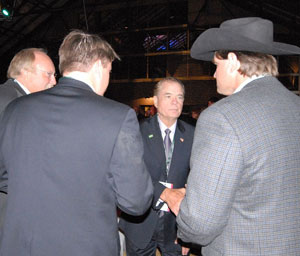 One of the thousands who attended the non-partisan AgNite event held in the Twin Cities on the second night of the Republican National Convention was former agriculture secretary John Block, who is currently serving as co-chairman of John McCain’s Farm and Ranch committee.
One of the thousands who attended the non-partisan AgNite event held in the Twin Cities on the second night of the Republican National Convention was former agriculture secretary John Block, who is currently serving as co-chairman of John McCain’s Farm and Ranch committee.
Block was impressed and proud at the turnout at the event. “To me that suggests that agriculture really is important, although I think that people sometimes take us for granted,” Block said. “It’s exciting to see agriculture in the spotlight today, not just here at the convention, but in terms of whether farmers can produce enough food to feed the world and the fact is we’ve exported a record amount of food this year. We’re doing a terrific job in agriculture.”
The AgNite event was sponsored by the Minnesota Agri-Growth Council and featured the support of agribusiness organizations and industries nationwide.
Listen to my interview with John Block here:
agnite-08-block.mp3
Be sure to check out the AgNite Photo Album for 200 pictures from the event.



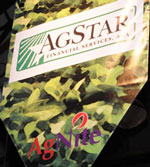 There is no question that AgNite is THE “go-to” event in the Twin Cities this second evening of the Republican National Convention. Organizers were expecting 3-4,000 and that expectation has been surpassed. As someone said, “What if you threw a party and everyone showed up?” It sure seems like that has happened here.
There is no question that AgNite is THE “go-to” event in the Twin Cities this second evening of the Republican National Convention. Organizers were expecting 3-4,000 and that expectation has been surpassed. As someone said, “What if you threw a party and everyone showed up?” It sure seems like that has happened here.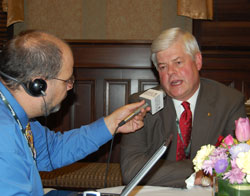 The event is being held in the historic downtown Minneapolis Depot, which is packed with people. “My biggest fear was that there wouldn’t be anybody here,” Paul said. “That didn’t happen.”
The event is being held in the historic downtown Minneapolis Depot, which is packed with people. “My biggest fear was that there wouldn’t be anybody here,” Paul said. “That didn’t happen.”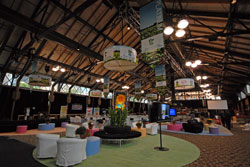 Preparations are nearing completion here at AgNite at The Depot.
Preparations are nearing completion here at AgNite at The Depot. The Minnesota Agri-Growth Council is the organization hosting AgNite in Minneapolis. Their President is Daryn McBeth, seen here being interviewed by Cindy. This was at the Feeding America food packing event held at their local network affiliate,
The Minnesota Agri-Growth Council is the organization hosting AgNite in Minneapolis. Their President is Daryn McBeth, seen here being interviewed by Cindy. This was at the Feeding America food packing event held at their local network affiliate, 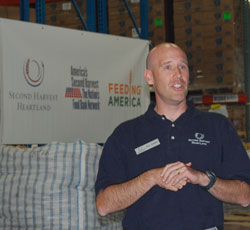
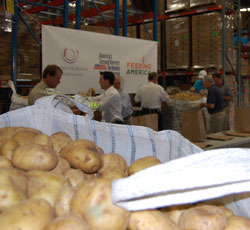 Executive Director Rob Zeaske says the potatoes are supplied by a generous donor from St. Cloud who prefers to remain anonymous. “Last year they gave us 750,000 pounds of potatoes and are trying to get to a million this year and based on our summer and the economic state, we sure need it,” he said.
Executive Director Rob Zeaske says the potatoes are supplied by a generous donor from St. Cloud who prefers to remain anonymous. “Last year they gave us 750,000 pounds of potatoes and are trying to get to a million this year and based on our summer and the economic state, we sure need it,” he said.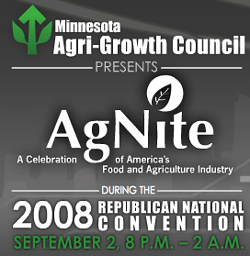 Besides finding coverage of AgNite, “A Celebration of America’s Food and Agriculture Industry,” here on AgWired you’ll also find lots of content being posted onto the
Besides finding coverage of AgNite, “A Celebration of America’s Food and Agriculture Industry,” here on AgWired you’ll also find lots of content being posted onto the 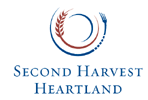 Hello from Minneapolis, MN, the site of this evening’s,
Hello from Minneapolis, MN, the site of this evening’s,  The potential for increasing yields exists everywhere if you ask Michael Doane. Michael is the Sustainability Team Lead for
The potential for increasing yields exists everywhere if you ask Michael Doane. Michael is the Sustainability Team Lead for  Thirty-three percent of the land’s surface is used for food production. That’s the figure that John Hoffman, Iowa farmer and President of the
Thirty-three percent of the land’s surface is used for food production. That’s the figure that John Hoffman, Iowa farmer and President of the